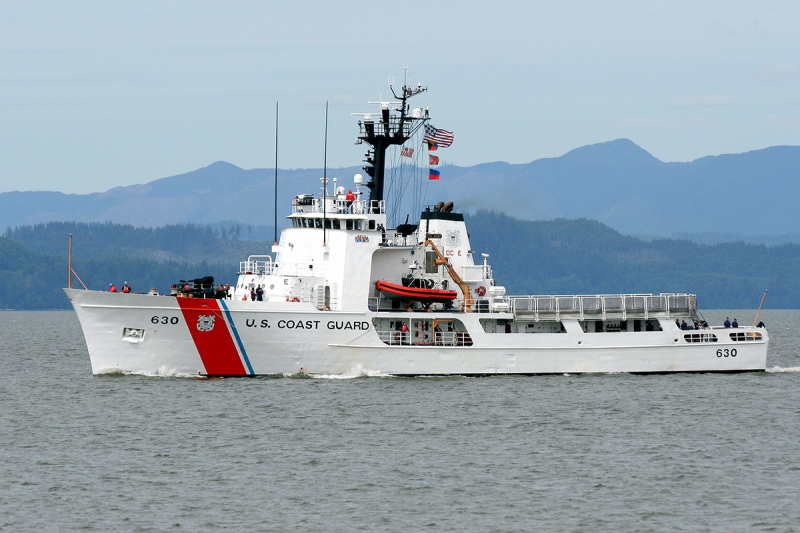A series of equipment casualties on a 49-year-old Coast Guard cutter forced an early end to its counter-narcotics patrol, underlining the needs behind the Coast Guard’s ongoing fleet recapitalization.
The Alert, one of 14 remaining 210'x34'x10'6" Reliance-class medium endurance cutters, returned to its homeport at Astoria, Ore., Friday after a 39-day deployment in the Eastern Pacific, according to Coast Guard officials.
The Alert had departed Feb. 5 and almost immediately began suffering engineering malfunctions — some 35 in all, over just the first 19 days at sea.
Problems cropped up in the Alert’s radar, propulsion and fuel systems. The topper was a crankcase explosion in one of the Alco 16V-251 diesel mains, resulting from a seized oil pump. That required a week-long layover in Panama while the crew inspected the engine, and ultimately a decision to end the patrol early, said Coast Guard officials.

Crewmembers work to repair a generator on the Coast Guard cutter Alert. Coast Guard photo.
"We left on patrol with great hopes and a crew at top performance, thoroughly trained and operationally tested, but one of our main engines broke, sending us home before we got into any operations, which was very disappointing for everyone," said Cmdr. Tobias Reid, the Alert’s commanding officer, in a prepared statement. "Our engineers did an outstanding job responding to the casualty and put a huge amount of effort into repairing the engine on station, but it requires an extensive overhaul that can only be completed at home."
Commissioned in August 1969, the Alert was the last of the Reliance class to come down the ways, and today is one of three in the class stationed in Oregon and Washington. From 1986 to 1997 the entire class underwent midlife overhauls at around $20 million per vessel. They are scheduled now for replacement by new 360'x54'x17' offshore patrol cutters beginning in fiscal year 2021.
“The offshore patrol cutter will be the backbone of Coast Guard offshore presence and the manifestation of our at-sea authorities,” said Coast Guard Commandant Adm. Paul Zukunft, who is winding up a four-year term when he pushed for more sustained funding of the recapitalization program. “It is essential to stopping smugglers at sea, for interdicting undocumented migrants, rescuing mariners, enforcing fisheries laws, responding to disasters and protecting our ports.”
Coast Guard officials have candidly described the troubles with operating aging vessels in the news media and before Congress. One of those recent cases involved the 399'x83'x31' heavy icebreaker Polar Star, built in 1976, whose crew overcame major challenges – including a shaft seal leak and engine failure – on their last resupply mission to the National Science Foundation bases in Antarctica. The Navy and Coast recently issued a long-anticipated request for proposals to build the first of three planned heavy icebreakers, but in the meantime the Polar Star must keep going into the 2020s.





